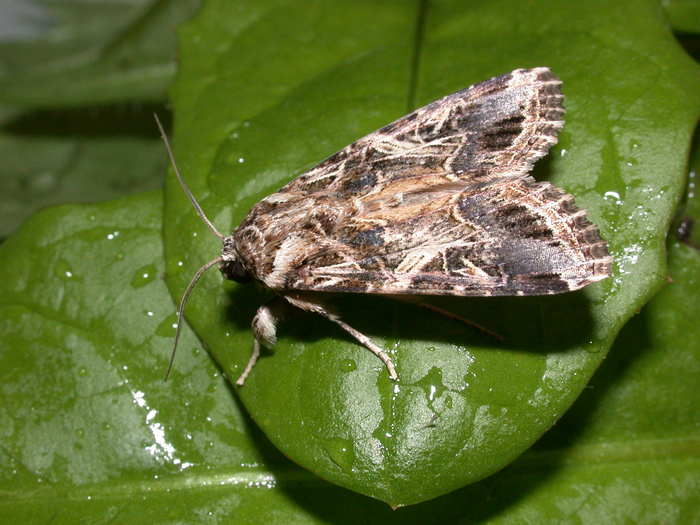The Egyptian cotton leafworm (Spodoptera littoralis) is a pest species in France. It is found throughout the Mediterranean Basin as well as in Africa and the Middle East. Moth larvae are extremely polyphagous[1] and cause damage to diverse crop species (e.g., corn, legumes, cotton, tomatoes, peppers). As part of broader efforts to reduce pesticide levels, we must develop effective biocontrol methods. Such strategies often rely on disrupting reproduction and trapping moths using, most commonly, sex pheromones. However, pheromone synthesis is an expensive process, and it thus remains important to have other control strategies on hand. To this end, we need to improve our understanding of olfactory receptors in this moth.

Credit: INRAE – Michel Renou
The Egyptian cotton leafworm (Spodoptera littoralis) is a pest species in France. It is found throughout the Mediterranean Basin as well as in Africa and the Middle East. Moth larvae are extremely polyphagous[1] and cause damage to diverse crop species (e.g., corn, legumes, cotton, tomatoes, peppers). As part of broader efforts to reduce pesticide levels, we must develop effective biocontrol methods. Such strategies often rely on disrupting reproduction and trapping moths using, most commonly, sex pheromones. However, pheromone synthesis is an expensive process, and it thus remains important to have other control strategies on hand. To this end, we need to improve our understanding of olfactory receptors in this moth.
In 2019, these research collaborators identified OR5, an olfactory receptor in the Egyptian cotton leafworm that recognises the main compound in the female sex pheromone blend. In this new study, the scientists explored the receptor’s evolutionary trajectory within Spodoptera to better characterise its functionality and specificity. They used a combined approach in which they resurrected ancestral receptors in the laboratory, with the help of computer analysis, and they modelled the 3D structure of the receptors. They were thus able to determine that OR5 appeared around 7 million years ago. The researchers also employed site-directed mutagenesis[2] to explore OR5’s genetic fine-tuning, which allowed them to identify the eight amino acids (AAs) behind the receptor’s high degree of specificity. This finding is particularly unexpected, given that past research on receptor evolution has suggested just one or two AA substitutions suffice to change the functionality of ecologically important receptors.
We must clarify how olfactory receptors emerge and acquire specificity over evolutionary time if we wish to anticipate the development of resistance to pheromone-based plant protection products. This research advances the above goal and, additionally, clarifies the function of OR5, a highly specific receptor that is essential in the reproduction of two Spodoptera species—the Egyptian cotton leafworm and the tobacco cutworm (S. litura). The latter occurs mostly in Asia and is also polyphagous. The discoveries detailed above will help spur the development of new biocontrol strategies that rely on (1) agonist molecules, which occupy receptors to the exclusion of the key pheromone compound, or (2) antagonist molecules, which block the receptor from being activated by the key pheromone compound.
This study arose from a collaboration between the Institute of Ecology and Environmental Sciences of Paris (iEES Paris; under the aegis of INRAE, Sorbonne University, CNRS, IRD, UPEC, and Paris Cité University) and the Chinese National Institute of Plant Protection. It was the fruit of the BiPi International Associated Laboratory.
[1]Polyphagous organisms feed on many different species
[2]Site-directed mutagenesis is a technique that introduces one or more precise mutations into a gene to study the functional impacts on the encoded protein.
Journal
Proceedings of the National Academy of Sciences
DOI
10.1073/pnas.2221166120
Article Title
A tale of two copies: Evolutionary trajectories of moth pheromone receptors
Article Publication Date
12-May-2023




